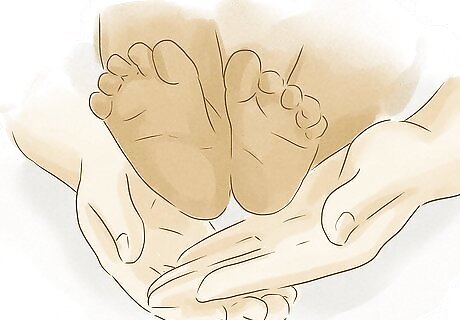
views
Understanding Parental Rights

Learn about your parental rights. When you relinquish your parental rights, you are giving up the right to direct the child's upbringing, including any decisions related to medical care, education, and religious upbringing. You also give up the responsibility to monitor your child's behavior or provide food, clothing, or shelter for your child. Once you give up parental rights, you are also giving up your right to have any contact with your child, including rights to visitation or telephone contact. Sometimes, you can negotiate an arrangement where you are allowed to contact the child, but these arrangements are highly unusual and hard to enforce. They often occur only where the state has moved to terminate the parental rights, not where a parent has voluntarily sought termination. Be aware that during the termination process, you will still be responsible for the child. This includes any child support payments due.

Understand the limitations on termination. In many states, you cannot relinquish your parental rights unless someone else is available to accept them. This will ensure that the child does not become a ward of the state. Typically, if one parent wants to give up parental rights then both parents must agree. Furthermore, there should be another person waiting in the wings to adopt the child, otherwise a court is unlikely to approve of termination even where the other parent agrees. You cannot give up your parental rights simply to get out of child support payments. A court does not terminate parental rights unless it is in the best interests of the child.

Meet with an attorney. Family law is complicated. Many different factors will impact your case and how a judge will view it. Accordingly, you should try to secure the services of an experienced local attorney to help you with the relinquishment process. You can find an experienced family law attorney by visiting your state's bar association website, which runs a referral program. If costs are a concern, be aware that many attorneys now offer “unbundled” legal services. With “unbundled” services, the attorney agrees only to do discrete tasks for a fee. You control what work the attorney performs. For example, you can have an attorney look at an adoption contract or represent you in court while you perform all other legal tasks yourself.
Putting the Child up for Adoption

Contact an adoption agency. If you are pregnant and do not want to raise the child, then you can contact an adoption agency. The agency will find a home for the child. Generally, you should contact adoption agencies before the baby is born, as many adoptive parents only want to adopt babies. Adoptions are closely regulated by the state. Many states allow adoptive parents to pay for medical care or living expenses for the mother. But no state allows the adoptive parents to pay for the child itself. Buying and selling children is considered human trafficking. To find an adoption agency, you can search online or contact your state's licensing agency. Ask about any complaints lodged against the agency.

Decide on an adoption type. Adoptions can be open, semi-open, or closed. These terms refer to the amount of contact the birth mother will have with the child, and the amount of information that will be shared between the adoptive parents and the birth mother. In the “closed” adoption, the birth mother will have no contact with the adoptive parents and will not receive updates on the child's life. Some birth mothers choose a closed adoption because they find it easier to help them move on with their lives. In the “open” adoption, the birth mother and the adoptive parents share information freely. The birth mother may even see the child occasionally and will receive photographs and cards from the adoptive parents. Open adoptions may be difficult for the birth mother because, although she will be in contact with the child, she will not have a say in how the child is raised. The “semi-open” adoption is the most popular. In this situation, the birth mother receives updates from the adoptive family but receives them through the adoption agency. Today, about 90% of adoptions are semi-open adoptions.

Choose a family. Regardless of the adoption type you choose, you can still be involved in selecting the adoptive parents. You do not have to choose a family, but most adoption agencies will include you in the process and send you information on prospective parents. You may also have an in-person or telephone meeting with the prospective parents. You can ask them any questions you choose, such as how they intend to raise the child, whether they have other children, and what kind of home they make for their children.

Complete forms. The agency will likely have its own forms and contracts that comply with state law. Once you go into labor, you should contact your adoption specialist. You will probably have to sign a relinquishment form before you leave the hospital.
Surrendering the Child at a Safe Haven Drop-Off

Understand safe haven drop-offs. Many states have passed legislation allowing parents to drop off their children at particular places, such as hospitals and fire stations. At these drop-off locations, parents are often able to remain anonymous. Even if parents must identify themselves, they are not subject to prosecution for child neglect if all procedures are followed. However, if the child shows evidence of abuse, then the parents can be prosecuted.

Confirm that the child is young enough. Safe Haven drop-offs are aimed toward new mothers who do not want to raise a child and who did not arrange for an adoption prior to giving birth. Because of this, the laws tend to have age limits on the children eligible. Some states limit drop offs to children younger than 3 days old. There are wide variations in these laws. You should probably talk with an attorney, though time often will not permit consultation with a lawyer. Accordingly, you should visit the National Safe Haven Alliance (here) and click on your state. You will then be directed to a state website or a copy of the state statute which lists the legal requirements. The National Safe Haven Alliance also runs a toll free hotline, 1-888-510-BABY, which you can call with questions.

Locate a drop-off location. Each state designates different locations as safe havens. To find a location, visit the National Safe Haven Alliance and click on your state. Common places include: Police and fire stations. Most states have designated police and fire stations as safe haven locations. In states where police and fire stations have been named as safe havens, the baby must be left with an on-duty employee. Hospitals. Most states have designated hospitals as safe haven locations. Some require that the baby be relinquished at a specific location within the hospital, while others allow the baby to be left with any adult working in the hospital. In some states you may also leave a newborn at the hospital where you gave birth and let an employee know you will not be returning. Churches. In states where churches are considered safe havens, the law generally requires that the baby be left inside and that persons are present at the church at the time. Some states require the baby be handed to an employee with emergency medical training. Medical centers. In states where medical centers are designated safe havens the laws are very clear; babies can be left at medical centers during business hours and only with an on-duty employee of that medical center. Adoption agencies. Very few states consider adoption agencies as safe haven drop offs. In those states that allow a baby to be dropped off at an adoption agency, the baby must be handed to an employee of the adoption agency during normal business hours. Welfare agencies. A few states allow licensed welfare agencies to act as safe havens. In these states, the baby must be handed to a volunteer or employee of the company during normal business hours. Other. A handful of states allow a parent to call the Emergency Services and relinquish a baby to an Emergency Medical Technician (“EMT”) or an Emergency responder, or leave the baby with an employee at a birthing center, institutional infirmary, or other medical facility.

Fill out a questionnaire. You may be asked to complete a medical questionnaire for the baby. This questionnaire asks simple questions about the baby's medical history and any serious medical conditions the mother or father may have. You may also wish to consider preparing a simple document with the baby's date of birth and any serious medical conditions that run on the mother's or father's side of the family. You can leave this with the baby to ensure he or she gets proper medical care.

Drop the baby off. States differ as to who may actually drop the child off. In some states, a parent must do this. In other states, any adult may drop the child off provided they have the parent's consent. You should check your state laws for more information on who may drop the baby off. After the baby is dropped off, he or she will be placed in a foster or pre-adoptive home. If you change your mind, you must immediately call the local Division of Child Services in the county where the child was dropped off.
Consenting to a Step-Parent Adoption

Discuss with the other parent. Sometimes, when the other parent is married to someone new, the step-parent is willing to accept parental responsibilities. In this situation, you will most likely be able to give up your rights and responsibilities in conjunction with a step-parent adoption. In most cases, this is done by agreement, and the case is filed by the step-parent requesting adoption. Depending on state law, the child may also have to consent to the adoption. The age threshold varies by state, but 10-14 is most common.

Respond to the adoption petition. In most states, the step-parent files the petition for adoption. As the non-custodial parent, you will then have to respond. Because you are consenting to the adoption, you will have to notify the court of that fact. State laws have different ways that you can consent: In some states, you may have to write out a statement explaining that you consent to the adoption. Other states require that the consent be given in front of a judge. In other situations, you may have consented upfront when you signed a joint petition for step-parent adoption.

Receive any mandatory counseling. Some states may require that you meet with someone who counsels you as to your parental rights. The counseling may cover any alternatives to giving up custody.

Attend a hearing. You may or may not be required to attend a hearing. At the hearing, you will confirm that you understand your parental rights and voluntarily relinquish them. You may also be asked to sign documents.
Surrendering Your Parental Rights after Removal

Receive a CHIPS petition. A CHIPS petition stands for “Child in Need of Protection or Services.” It is filed by the state, typically because the state believes that the child's safety is endangered.

Work on a case plan. The state will work with you to develop a plan so that you can keep your children. The plan will attempt to address whatever shortfall in your parenting that the state observed. If you do not want to retain your parental rights, you should inform the state of that fact at this time. The state can move to have your rights terminated.

Attend a court hearing. If the state decides to go ahead with the termination, it will file to have your rights terminated. You will attend the hearing and consent to having your parental rights terminated. The court may need to reassure itself that you have sufficient capacity to give consent. It may question you and also could order that you meet with someone for counseling.




















Comments
0 comment